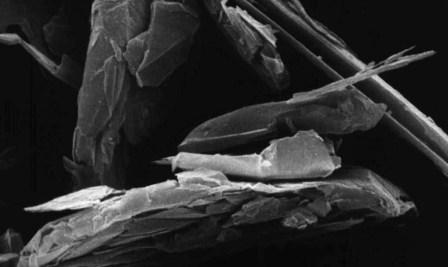
In 2010 a European Commission included graphite among the 14 materials it considered high in both economic importance and supply risk. The British Geological Survey listed graphite as one of the materials to most likely be in short supply globally. The US has also declared graphite a critical material. The U.S. Department of Homeland Security, and the State Department, said America could be hurt if terrorists were to disable graphite mines in China.
Supply and Demand
The natural graphite market is 1-1.2 million tons per year and consists of several different forms of graphite – flake, amorphous and lump. Historical applications primarily use amorphous and lump graphite, most newly emerging technologies and applications use flake graphite. Of the up to 1.2 million tons of graphite that are processed each year just 40% is flake.
China, India and Canada are responsible for most graphite mining and processing with China producing the lion’s share at 70–80%. China’s production is 70% amorphous and lower value small flake graphite.
Currently China imports a significant amount of North Korea’s large flake graphite production raising considerable doubts in regards to China’s abilities to ramp up its graphite supply. Indeed China has already taken steps to retain its graphite resources by restricting its export quota – China imposed a 20% export duty, a 17% VAT and also closed state owned enterprises.
“The days of cheap, abundant graphite from China are over.” Industrial Minerals Magazine May, 2011.
It’s thought that the increased use of lithium-ion batteries could gobble up well over 1.6 Mt of flake graphite per year by 2020 – only flake, upgraded to 99.9% purity and synthetic graphite (made from petroleum coke, a very expensive process) can be used in lithium-ion batteries.
“Annual flake graphite production will have to increase by a factor of six by 2020 to meet incremental lithium carbonate requirements for batteries.” Canaccord research report.
The U.S. Geological Survey says large-scale fuel cell applications are being developed that could consume as much graphite as all other uses combined – a bold statement, but even if only half of the USGS demand is realized graphite use is going to explode just because of fuel cells, let alone other known demand drivers and new applications.
What if the current market almost doubles – new demand, between now and 2020, comes in at one million tonnes on top of the existing 1.2 million?
Today’s graphite producers, other than the ones in China, are going to have to produce more and junior companies are going to have to get busy and start to develop deposits. There will be a premium placed on mines in stable, safe areas for investment.
Since a large scale producer puts out 20,000 to 40,000 tons per year that’s a lot of new mines and a lot of opportunity for investors – one million tonnes divided by 40,000 could be the equivalent of up to twenty five mines worth of new production needed – and that’s a severe low-balling of the experts forecast increased usage numbers.



 Follow us on Twitter
Follow us on Twitter Become our facebook fan
Become our facebook fan










Comments are closed.